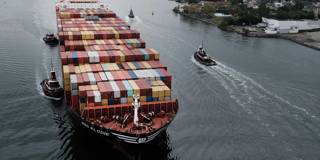According to the World Bank’s latest forecast, global growth is projected to slow by 2.7 percentage points between 2021 and 2024 – more than twice the deceleration between 1976 and 1979. To avoid a prolonged period of stagflation, policymakers worldwide must focus on five key areas.
WASHINGTON, DC – Just over two years after COVID-19 caused the deepest global recession since World War II, the world economy is again in danger. This time, it is facing high inflation and slow growth simultaneously. Even if a global recession is averted, the pain of stagflation could persist for several years, with potentially destabilizing consequences for low- and middle-income economies – unless major supply increases are achieved.

WASHINGTON, DC – Just over two years after COVID-19 caused the deepest global recession since World War II, the world economy is again in danger. This time, it is facing high inflation and slow growth simultaneously. Even if a global recession is averted, the pain of stagflation could persist for several years, with potentially destabilizing consequences for low- and middle-income economies – unless major supply increases are achieved.